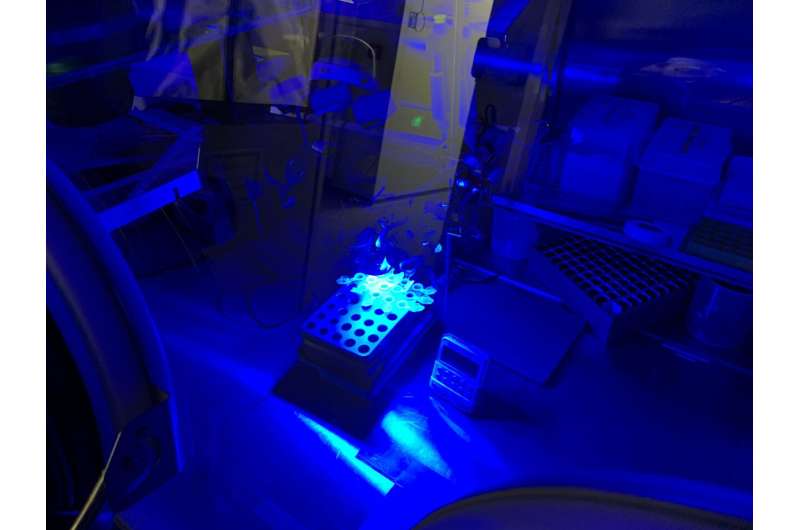December 1, 2023 report
This article has been reviewed according to Science X's editorial process and policies. Editors have highlighted the following attributes while ensuring the content's credibility:
fact-checked
peer-reviewed publication
trusted source
proofread
Two methods for demonstrating how photolyase isolates use light to repair damaged DNA

Two teams of bio-researchers have developed similar processes for demonstrating how photolyase isolates use light to repair damaged DNA. In their papers, both published in the journal Science, the two groups outline their stop-motion-animation-type process to capture the action in detail.
Marten Vos, with École Polytechnique, Institut Polytechnique de Paris has published a Perspectives piece in the same journal issue outlining the general means by which DNA is repaired in many non-mammals via a protein called photolyase and the procedures developed by the two research teams that capture how it happens step by step.
Prior research has shown that many animals (though most are not mammals) have evolved a process for repairing DNA damaged by UV radiation—a protein known as photolyase isolates damaged DNA and then uses the energy associated with photons to carry out repairs. And while this process has been understood on a general level, the steps involved have remained a mystery. In these two new studies, both teams developed a way to capture moment-by-moment action, similar in some respects to stop-motion animation techniques used to create movies.
Both procedures start with the knowledge that UV damage to DNA typically results in breaking apart some of the base pairs that hold the two strands together. When that happens, the adjacent pairs bind to other broken strands, preventing the DNA from repairing itself
In the first study, a large international team used time-resolved crystallography experiments to capture the action as it unfolded. In the second effort, another large international team of researchers used a combined approach involving both time-resolved crystallography and computational analyses to capture the process.
Both teams were able to record the process by firing a laser at the photolyase as it began its work. Each group then sent pulses of X-rays as a way to capture the action at each step. They found that a part of the photolyase formed a V, allowing it to capture a photon and its energy.
That energy was used to turn the V upside down and then to transfer an electron to a damaged DNA strand, which broke the undesired bond. This released an electron, bringing the photolyase back to its upright V position, allowing it to assist in forming a new bond between the previously broken strands by rejoining the base pairs.
More information: Nina-Eleni Christou et al, Time-resolved crystallography captures light-driven DNA repair, Science (2023). DOI: 10.1126/science.adj4270
Manuel Maestre-Reyna et al, Visualizing the DNA repair process by a photolyase at atomic resolution, Science (2023). DOI: 10.1126/science.add7795
Marten H. Vos, Filming DNA repair at the atomic level, Science (2023). DOI: 10.1126/science.adl3002
Journal information: Science
© 2023 Science X Network



















